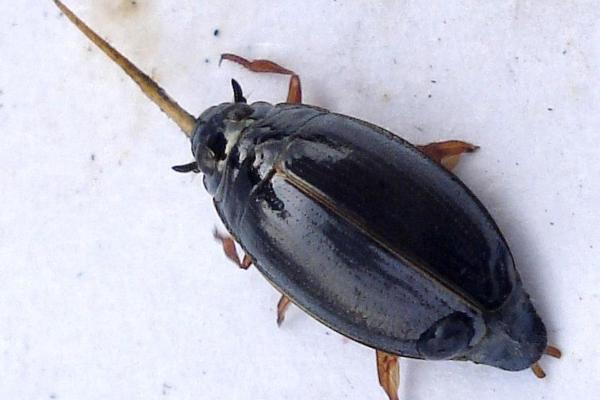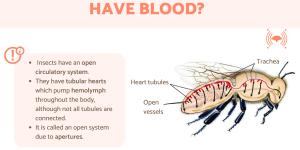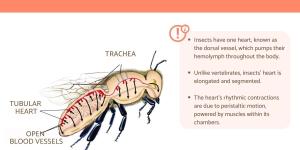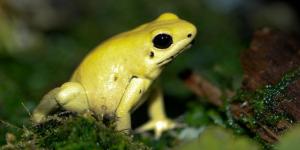Tracheal System in Insects - Tracheal Respiration


Tracheal respiration in insects is a mechanism for breathing which is adapted to their morphology and size. More complex organisms need a similarly complex system for breathing, such is the case with birds and mammals. Insects still need oxygen to survive, but they do not inhale via the mouth like other types of respiratory systems. Instead, air enters the body through various openings known as spiracles. It is these openings which lead to the tracheal system in insects.
At AnimalWised, we explain tracheal respiration in insects. We look at why insects need to breathe differently, as well as what adaptations allow them to survive in this way.
Do insects have lungs?
There are more species of insect than there are any other type of animal on Earth, whether they are vertebrate or invertebrate animals. Their diversity is incredible, but they all share certain characteristics. As with all animals, they need to take in oxygen for the oxygen cycle (gas exchange) and will emit carbon dioxide in the process. This is respiration, of which there are different types in different animals.
Insects do not have lungs. Some insects in their larval stage will have gills. This is because they are born in water and need a way to complete the oxygen cycle while submerged. Any insects with gills have them as part of the tracheal system, the method of respiration common to all insects. We look at this system in detail in the sections below.
What is tracheal respiration in insects?
Tracheal respiration is a type of respiration that occurs in insects, as well as some other invertebrates. Smaller animals require less oxygen and a complex pulmonary system will not be able to fit into the bodies of insects. Instead, they breathe by diffusion through the skin. In this way, air travels through a gradient without the need for any effort on the part of the animal.
In larger insects or at times of greater activity such as insect flight, the animal will need to ventilate. This allows the air to enter their body through pores or spiracles in the skin. These spiracles lead to structures called tracheoles and from there the oxygen can move to cells.
The pores can always be open, but they can also be closed, usually to prevent water entering the tracheae. This opening and closing is controlled by the central nervous system. They will pump their abdomen and thorax in a way that the air will come out when compressed and enter through the spiracles when expanded. They can even use these muscles to pump air through the spiracles during flight.

What is the tracheal system in insects like?
Despite their small size, the respiratory system of insects is highly developed. It is made up of tracheal tubes that branch out through the entire body of the animal and are filled with air. The end of the branch is the tracheoles which dump oxygen into the cells of the body.
Air reaches the tracheolar system through spiracles, pores that open on the animal's surface. From each spiracle, a tube is generated that branches out, becoming increasingly fine until the tracheoles are built, where gas exchange takes place.
The end of the tracheoles is filled with fluid. Only when the animal is most active is the fluid displaced by air. In addition, these tubes are interconnected with each other, they present longitudinal and transverse interconnections, a system which is known as anastomosis.
In some insects we can see air sacs. These are widening of these tubes that can occupy a large percentage of the animal and are used as a kind of bellows for air movement through the body.
How does gas exchange occur in tracheal respiration?
Breathing with this type of system is discontinuous. Animals have closed spiracles, meaning only the air that is already in the tracheolar system is that which undergoes gas exchange. During this closed process, the amount of oxygen locked in the animal's body decreases and, conversely, the amount of carbon dioxide increases.
The spiracles then start to open and close continuously causing a fluctuation. During this process, some carbon dioxide is released. After this period, the spiracles open and all the carbon dioxide escapes, recovering the oxygen levels.
Discover more about insect anatomy with our article on the smallest insects in the world.

Tracheal respiration in aquatic insects
An insect that lives in water cannot open the spiracles while submerged. If they were to do so, their body would fill with water and they would die. For this reason, they have various structural adaptations to allow gas exchange to take place in aquatic insects:
Tracheal gills
They are gills that work in a similar way to those of fish. The water enters and only the oxygen that is in it passes to the tracheolar system before it is distributed to the insect's cells. These gills can be found in the internal/external zone of the body, in the posterior part of the abdomen.
Functional spiracles
These are spiracles that can open or close. In the case of mosquito larvae, they take the final part of the abdomen out of the water, open the spiracles, take a breath and then resubmerge into the water.
Gas gill
These are air bubbles which the insect uses to supply oxygen while submerged, of which there are two types:
- Compressible: an animal rises to the surface and grabs an air bubble[1]. This bubble acts like a trachea, allowing them to intake oxygen from the water. The animal will produce carbon dioxide, but it can easily go into the water. If the animal swims a lot or goes down deep, the bubble will have a lot of pressure. It will become increasingly smaller, so the insect will have to surface to take a new bubble.
- Incompressible or plastron: this bubble will not change its size, therefore it can be indefinite. The mechanism is the same, but the animal has millions of hydrophobic hairs in a very small region of its body. These cause the bubble to remain enclosed in the structure. It is for this reason the bubble will never diminish.

Examples of tracheal respiration in insects
One of the animals that we often see in nature is the common whirligig beetle (Gyrinus natator). This small aquatic beetle breathes through a bubble gill and is depicted in the photo above.
Mayflies are another type of aquatic insect. During their larval and juvenile stages, they breathe through tracheal gills. When they reach adult state, they come out of the water. These gills are lost and they pass to air tracheal breathing. The same happens with animals such as mosquitoes and dragonflies. As with many other terrestrial insects, grasshoppers, ants, bees or wasps have air tracheal respiration throughout their lives.

If you want to read similar articles to Tracheal System in Insects - Tracheal Respiration, we recommend you visit our Facts about the animal kingdom category.
1. Matthews, P. G., & Seymour, R. S. (2010). Compressible gas gills of diving insects: measurements and models. Journal of insect physiology, 56(5), 470–479.
https://doi.org/10.1016/j.jinsphys.2009.07.011
- Hill, R. W., Wyse, G.A., & Anderson, M. (2004). Animal Physiology. Chap. 21. Editorial Panamericana SA, Madrid.
- Moyes, C. D., & Schulte, P. M. (2006). Principles of Animal Physiology. Chap.10. Addison Wesley-Pearson. San Francisco.
- Randall, D., Burggren, W., & French, K. (2002). Eckert: Animal Physiology, Mechanisms, and Adaptations. 4th ed. Chap. 13. McGrawHill/Interamericana, Madrid.








